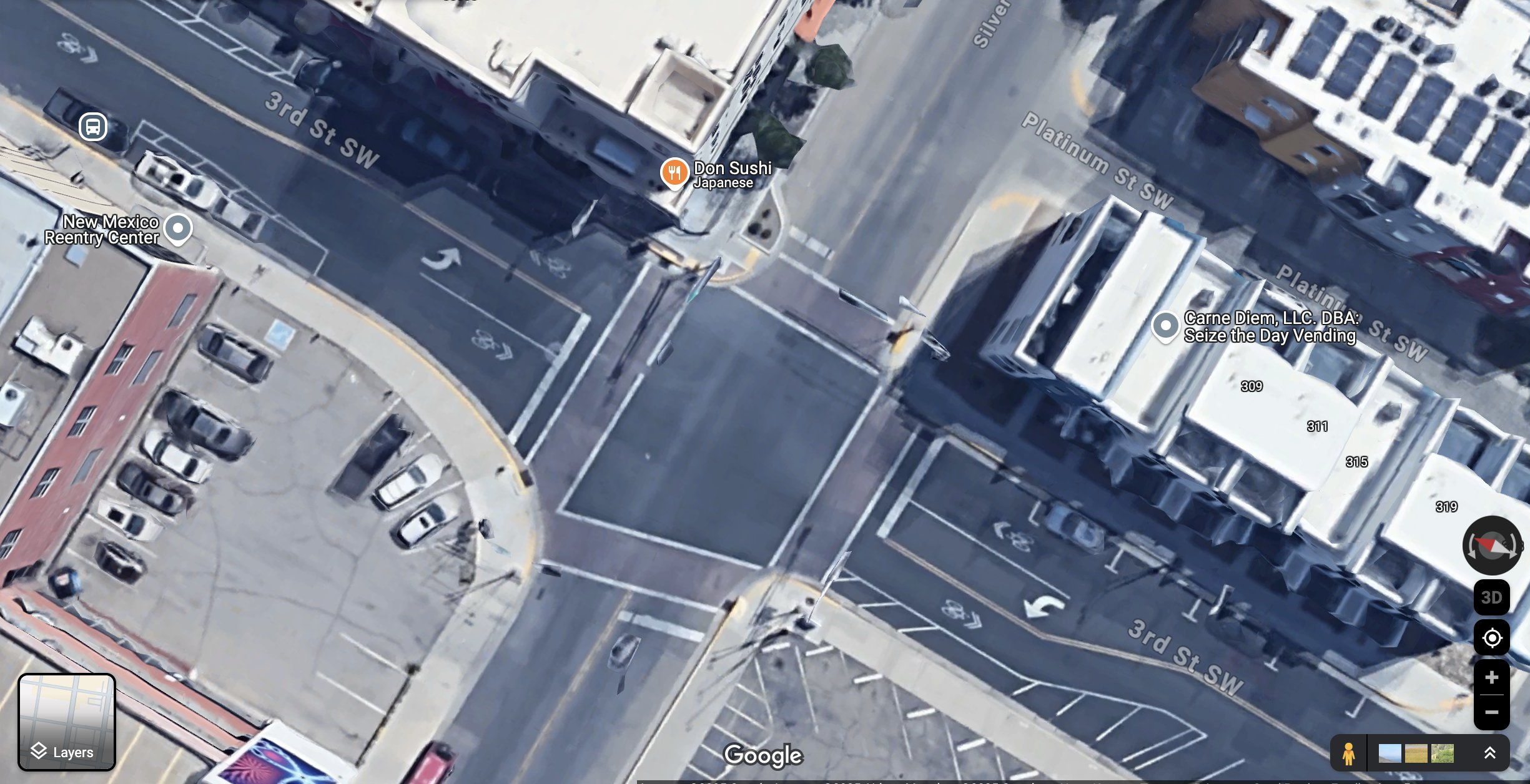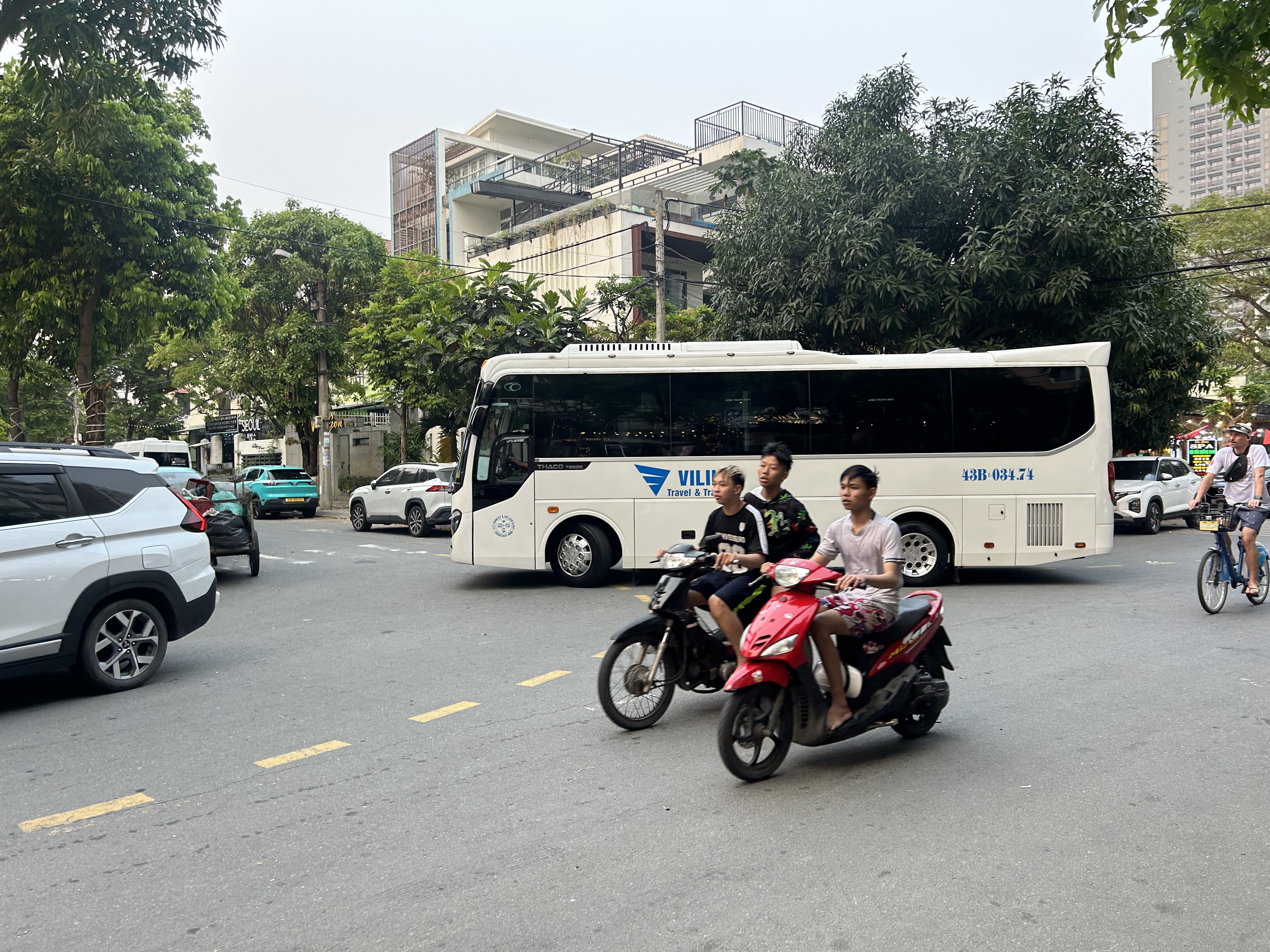Chaos and cooperation:
How I Learned to Stop Worrying About Da Nang's Streets and Embrace the Chaos
Many a westerner has remarked upon the chaos of Southeast Asian streets. In Indonesia and Malaysia, possessing illegal drugs can get you a lengthy prison sentence at best, but driving your motorbike the wrong way up a gridlocked freeway might get you a few angry gestures at worst. Your average grab driver in Jakarta is equipped with 110ccs, a backpack full of nasi goreng and is willing to bend the rules of the road for a 5-star review.
My American eyes couldn’t quite comprehend the chaos of Jakarta, or Da Nang: "how can there not be stop control at such a busy intersection?" "How do they negotiate all these conflicts?" "How is there not constant carnage?" The more time I spend in this part of the world, the more impressed I am with how well everything does work. Although the roads look chaotic and dangerous, they are actually quite a bit more forgiving than over-engineered American roads.
In America, we like everything to work on paper. We like the space to be clearly demarcated with lane markings, stop control devices, and plenty of rules to designate who has the right of way and who is in the wrong in the event of a crash. I recall driving 45 mph down Coors or Paseo Del Norte back in Albuquerque; it feels like you can almost turn your brain off. The rules are so clear – I’m on Coors and I have a green light ahead of me and nothing but open road – it’s only natural to relax and turn your brain off to some degree. But if a car pulls out of a strip mall parking lot and didn’t see you, or a pedestrian misgauged how far off you were or how fast you were going and steps into the road, there’s a good chance it will result in a high-speed crash. In the US, when something unexpected happens, it is likely to result in a crash, whereas in SE Asia, unexpected things happen on every damn block, so you need to be completely locked in on what is unfolding in front of you.
Driving in Da Nang is never a relaxing experience, but it works quite well. The streets are tight and can accommodate all kinds of movements that wouldn’t be possible on paper. By my apartment, there are a lot of tourist buses that often need to make a U-turn to find a parking spot on a busy street by the ocean – Ho Nghinh. The street is four lanes wide with parking on both sides and about 40 ft wide in most sections. For a bus to make a U-turn, they have to start in the right-hand lane, make as if to turn right at the intersection to give themselves more of a turning radius, before looping to the left across three lanes of traffic. They don’t wait for a gap in the traffic; they just put their hazard lights on and go for it, and everyone sees this coming and yields to them. In the US, this kind of movement is inconceivable; engineers often try to accommodate large turning vehicles, like semi-trucks or buses, without using space from neighboring traffic lanes. In Vietnam, what is not possible on paper is possible through cooperation and patience with one another.
American streets may look orderly and safe, but they’re often rigid, high-speed environments where any deviation from the norm can lead to disaster. Meanwhile, Southeast Asian streets look chaotic, but they’re built on adaptability, trust, and human-scale flexibility.
In the US, when an engineer is designing an intersection, if they expect large trucks or buses to be turning, they will create a very wide turning radius to ensure that the truck or bus does not need to use any space from another lane.
For example, on Silver and 3rd Street in Downtown Albuquerque, there is a very wide turning radius from the southbound 3rd street to westbound Silver Ave. The engineers went out of their way to accommodate the occasional large turning vehicle in downtown Albuquerque and were willing to impose a very long crossing where pedestrians are exposed to traffic for longer than necessary.

Wide curb radius at Silver and 3rd Street designed for buses — exposing pedestrians to longer crossings.
The problem is, when you design a turn in a walkable area to accommodate the odd turning bus or semi-truck, that intersection now fails pedestrians 24/7. Cars that don’t need such a generous turning radius can race around the corner like it’s an F1 turn.
I’ve seen big buses or trucks have to back up in order to make a turn onto a side street in Da Nang and block two lanes of a busy street in the process, but for less than 20 seconds, and it wasn’t the end of the world (see the video below!). If people cooperate and give each other a break, big buses can navigate tight corners.
Traffic flow near Ho Nghinh Street, Da Nang – cooperation in action.
The roads in Southeast Asia mostly function as shared spaces – places where all road users (pedestrians, bicyclists, motorcycles, cars, people selling stuff) share the road and nobody has priority. This urban planning concept has always existed but its current understanding is usually attributed to Dutch traffic engineer Hans Monderman.
Monderman implemented some shared space projects in his native Netherlands:
"To save money while still keeping the streets safe, Monderman approached the idea of removing signs and street furniture in order to create a flat, even surface where travelers of all modes had to negotiate rights-of-way amongst themselves. The plan exceeded even his own expectations, cutting vehicle speeds by forty percent. The absence of all traffic controls increased driver awareness, forcing them to slow down."
Monderman has some amazing quotes to explain why the approach is so successful, and also helps me understand why Vietnam feels so much safer than the streets of the US:
"All those signs are saying to cars, 'this is your space, and we have organized your behavior so that as long as you behave this way, nothing can happen to you’. That is the wrong story."
"When you treat people like idiots, they’ll behave like idiots."
Monderman’s ideas help explain why the chaos of Vietnam feels surprisingly safe: it’s not just about fewer signs or slower speeds. It’s about something deeper — trust.
The streets of Vietnam function because people trust each other to work it out. When someone cuts in front of you, you expect it, and respond with patience, not anger. Conflict is seen as part of the deal, not as a personal slight. You slow down, yield, move around them, and life goes on.
In America, the attitude is different. We've designed our streets to keep people separated, to minimize conflict. When conflict does happen, it's often treated as a violation of personal territory. Somebody cuts you off, and it's not just an inconvenience — it's an offense. A threat. A challenge.
This mindset shows up in disturbing ways: road rage shootings have nearly doubled since 2019. The stakes are higher because the emotional temperature of our streets is higher. We don’t expect to negotiate space together; we expect the world to stay out of our way.
In Da Nang, watching a bus back up into two lanes of traffic while dozens of motorcycles yield and weave around it without rage, I realized something: trust isn’t just nice. It’s functional. It makes the whole system work.
Maybe what looks like chaos is actually cooperation. Maybe instead of designing streets that pretend people are machines, we should design streets that assume people are human — and capable of working things out together. Maybe, instead of trying to choreograph every possible road movement, we should embrace mutual responsibility and allow people to negotiate conflicts on their own.
Example of shared space design transforming traffic and community life – Poynton, England.
